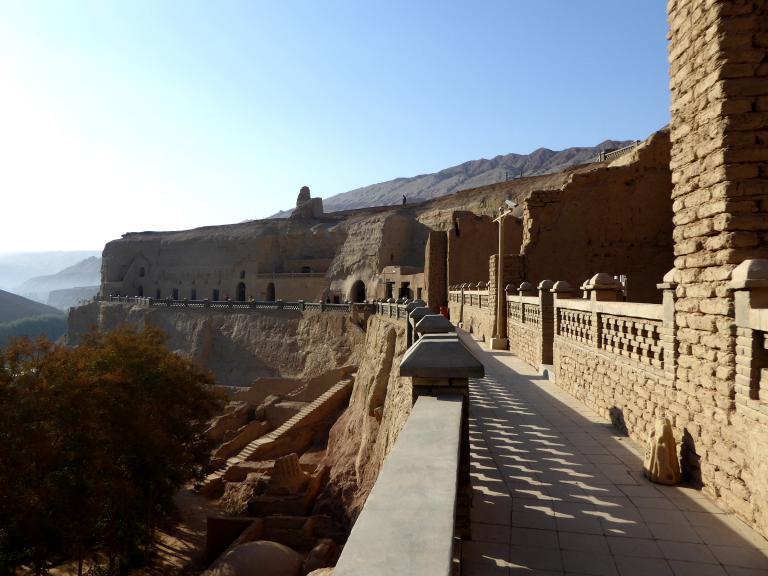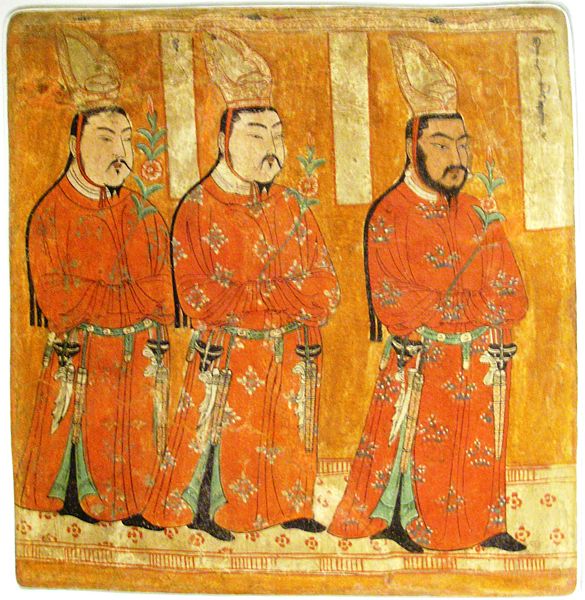Bezeklik Thousand-Buddha Cave
3 min readBezeklik Grotto is located in the West Bank of Murtuq River, the Mountainof Flames, about 40km away from northeast of Turpan City, today’s Xinjiang Uyghur Autonomous Region.”Bezeklik”means “Mountainside”in the Uyghur language. Cave groups scattered on the bluff within about one kilometer of the west bank of the river valley, and were built with three layers. The existing caves are 83, over 40 of which are those with paintings and the total area of the paintings saved is 1,200m2. Turpan Cave Temple groups are more than ter collectively known as Gaochang Grotto, which enjoys equal popularity with Xinjiang Qiu Ci Grotto, Central Plains Grotto with Dunhuang, Yungang andLongmen Grottoes as representatives, and the Ajanta Grotto which is the India’s largest grotto relic. Gaochang Grotto is one of the four representatives of Buddhist grotto art in the world. In Gaochang Grotto, the Bezeklik Grotto has the most existing caves and abundant contents and once was the royaltemple of Gaochang Uighurs Kingdom. In 1982, Bezeklik Grotto was listed as national key cultural relic protection site.

Bezeklik caves were firstly cut in the period of yeast’s Gaochang Kingdom(499-640). No.18,29,48 grottoes belong to this period. No.18 Grotto,a large grotto of a center column type, is an existing grotto whose contents of cave paintings could be seen clearly at the earliest. The front room and the bottom of the tunnel were repaired and painted again in early Uighur Gaochang. Only the upside and the top of the tunnel perfectly preserve the early wall painting content, namely Dousi type flat base patterns. The round collar shoulder style cassock thousand-Buddha was painted on the side walls with two hands shaking before the abdomen and the realism was adopted for the junction of top and side walls to paint purlins, square columns and so on though wood-like structure, lifelike images. After experiencing the development of yeast’s Gaochang Kingdom, the Bezeklik was called “Ningrong Temple”in the period of Tangxi State, which is an important Buddhist center in Xinjiang with a long standing reputation. Yang Xigu, the commander of Beiting, once rebuilt the temple, which showed that Bezeklik Grotto was developed into a Buddhist shrine in Xiting at that time. The grottoes belonging to this period are mainly No.16,17,25,27,31,42,69 grottoes, most of which were repaired and painted again after the 11th century. The themes of wall paintings in this period mainly originated from large Sutra paintings in the Central Plains. After Gaochang Grotto introduced new painting styles of the flourishing Tang Dynasty, the skill of line form was promoted to new heights and the painting lines were simple, smooth, vigorous and effective, combining form and spirit just through a few lines. In the period of Uighur Gaochang Kingdom, Ningrong Temple became a royal temple, where most ancient Gaochang kings built caves. Bezeklik Grotto remained the most abundant contents in Uighur Gaochang period, of which, No.14,20,31,33,39,41,82 grottoes and other grottoes were more typical.The themes of these cave paintings were richer than those of former ones, boasting of various paintings of Buddhas and Bodhisattvas, Large Jingbian Painting, Figure of Teaching the Dharma, Thousand Buddha Caves, Offerings to Bodhisattvas Ranks, Semi-gods and the Semi-devils, Picture of the fourHeavenly Kings, portraits of persons and Buddihist monk and a variety of decorative patterns, etc. Simultaneously, the Jataka stories reflecting that Buddha became the Buddha himself after worshipping Buddha for countless generations as well as a combination of sculpture and painting “Dharma in the Sarnath”and the theme of private area of the lord of heaven and so on were emerged.

The shapes and structures of Bezeklik Thousand-Buddha Cave mainly include three types that are the central column type, rectangular longitudinalcoupon top type and square yurt central scroll with winding corridor type and the rest are mostly derived or evolved from this. Throughout the Thousand-Buddha Caves, large caves were mainly dug in the powerful and prosperous period of yeast’s Gaochang and Uighur Gaochang, so we can see that the sizes of caves are not only related to donors’ identity, financial resources and so on, but also to the times to some extent. Bezeklik Thousand-Buddha Cave has important data value for researching western culture, art, religion, architecture and so on.








